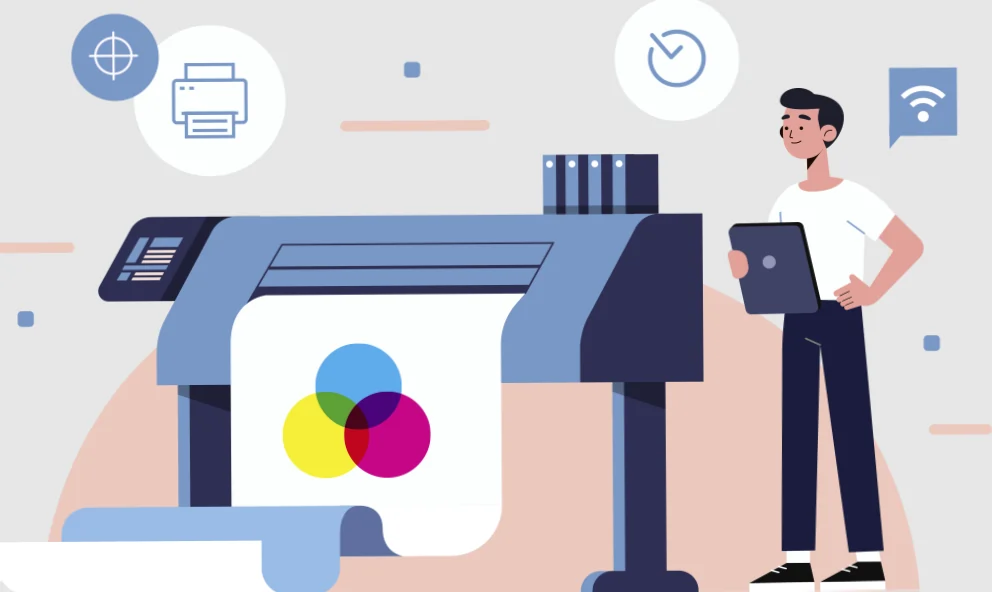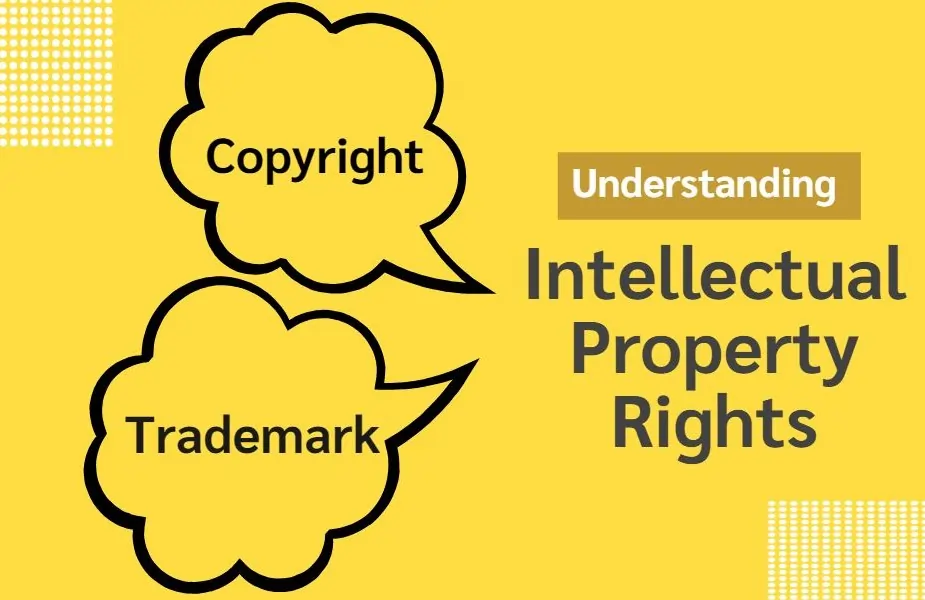The print on demand industry has experienced significant growth in recent years, with the global market size valued at USD 6.18 billion in 2022 and expected to grow at a compound annual growth rate (CAGR) of 25.8% from 2024 to 2030.
This growth can be attributed to the rise of e-commerce, increasing consumer demand for customized products, and advancements in printing technology. As the industry continues to expand, protecting your print on demand designs becomes crucial for maintaining a competitive edge and safeguarding your intellectual property.
The Rise of Print on Demand

Print on demand has become increasingly popular due to its ability to offer a wide range of customizable products without the need for large upfront investments or inventory management. This business model allows entrepreneurs and businesses to create unique designs and sell them on various products, such as apparel, home decor, drinkware, and accessories.
The growth of the print on demand market is driven by factors such as rising discretionary income, increasing internet usage and smartphone adoption, and a preference for fashion apparel and distinctive goods.
Why Protecting Your Print on Demand Designs is Crucial?
Protecting your designs is essential for several reasons:
Overall, as the print on demand industry continues to grow, it is crucial for businesses and entrepreneurs to protect their designs and intellectual property. By doing so, they can maintain a competitive advantage, safeguard their assets, and promote innovation in the market.
Understanding Intellectual Property

Intellectual property (IP) refers to creations of the mind, such as literary, artistic, and scientific works, as well as designs, artwork, and other content created or owned by individuals or businesses. In the context of print on demand and e-commerce, IP rights are crucial for protecting your original designs and preventing unauthorized use or infringement.
There are several types of intellectual property relevant to print on demand:
- Copyright: Copyright protects original creative works, such as photographs, novels, movies, and songs. In the print on demand industry, copyright applies to your designs once they are published, ensuring that you retain the sole right to reproduce and distribute your work.
- Trademark: A trademark is a type of IP geared toward items that help define a brand, such as company names, logos, or symbols, and that help distinguish one entity from another. Trademarks can be used to protect your brand identity and prevent others from using similar designs or logos that may confuse customers.
Understanding and respecting intellectual property rights is essential for print on demand businesses and e-commerce entrepreneurs. By doing so, you can avoid legal issues, maintain a competitive advantage, and safeguard your creative assets.
Legal Framework
This framework comprises copyright laws, trademark laws, and patent laws, which are designed to protect the creations of individuals and businesses.
Copyright Laws
Copyright laws protect original creative works, such as designs, artwork, photographs, novels, movies, and songs. In the print on demand industry, copyright applies to your designs once they are published, ensuring that you retain the sole right to reproduce and distribute your work.
Trademark Laws
Trademark laws protect brand identifiers, such as company names, logos, and symbols, which help distinguish one entity from another. Trademarks can be used to protect your brand identity and prevent others from using similar designs or logos that may confuse customers.
Patent Laws
Patent laws grant protection for new inventions and practical improvements of processes, machines, articles of manufacture, or compositions of matter. While patents are more relevant to the back-end printing side of print on demand, they may still impact the industry by protecting unique printing technologies or methods.
Understanding the legal framework surrounding intellectual property rights is crucial for print on demand businesses and e-commerce entrepreneurs. By adhering to these laws, you can avoid legal issues, maintain a competitive advantage, and safeguard your creative assets.
Initial Steps for Print on Demand Designs Protection
Before diving into the world of print on demand, it's essential to take some initial steps to protect your designs and intellectual property. Here are some key measures to consider:
Creating Original Designs
To avoid copyright infringement and maintain a competitive edge, it's crucial to create original designs for your print on demand products.
By developing unique and creative designs, you can ensure that your products stand out in the market and attract customers. You can draw inspiration from various sources, such as social media, trends, and personal interests, but always make sure to create your own original artwork.
Documentation and Record-Keeping
Proper documentation and record-keeping are essential for protecting your designs and intellectual property. Keep track of your design creation process, including sketches, drafts, and final versions, as well as any correspondence with designers or collaborators.
This documentation can serve as evidence of your ownership and creative process in case of disputes or infringement claims.
By taking these initial steps, you can lay a solid foundation for protecting your print on demand designs and intellectual property, ensuring that you can focus on growing your business with peace of mind.
Registration Procedures
Registering your intellectual property is an essential step in protecting your print on demand designs. Here's a brief overview of the registration procedures for copyrights and trademarks:
How to Register a Copyright
1. Create an account: Visit the U.S. Copyright Office's Electronic Copyright Office (eCO) Registration System and create an account.
2. Complete the application: Fill out the required information, including details about the work, the author, and the owner of the copyright.
3. Submit the work: Attach a digital copy of your work or send a physical copy to the Copyright Office, depending on the requirements.
4. Pay the filing fee: The filing fee for copyright registration ranges from $35 to $55 in United states. The pricing may differ in other countries
Once your application is submitted and approved, you will receive a registration certificate as proof of your copyright ownership.
How to Register a Trademark
1. Search for existing trademarks: Use the USPTO's Trademark Electronic Search System (TESS) to ensure that your desired trademark is not already registered or too similar to an existing one.
2. Prepare the application: Fill out the trademark application form, providing information about the owner, the trademark, and the goods or services associated with the trademark.
3. Submit the application: File the application with the United States Patent and Trademark Office (USPTO) either online or by mail.
4. Pay the filing fee: The filing fee for trademark registration varies depending on the type of application and the number of classes of goods or services.
The USPTO will review your application, and if approved, your trademark will be published in the Trademark Official Gazette, giving others an opportunity to oppose it. If there is no opposition, your trademark will be registered.
Benefits of copyright or Trademark Registrations
Registering your intellectual property provides several benefits, including:
1. Public record of ownership: Registration creates a public record, making it easier to prove ownership in case of disputes or infringement claims.
2. Legal presumption of ownership: In the case of copyrights, registration within five years of publication establishes prima facie evidence of the validity of the copyright and the facts stated in the registration certificate. For trademarks, registration provides a legal presumption that you own the trademark and have the right to use it.
3. Enforcement of rights: Registration allows you to file infringement lawsuits in federal court and potentially recover statutory damages and attorney's fees.
4. Deterrence: Registration can deter potential infringers by making it clear that you have legal protection for your designs.
By registering your intellectual property, you can better protect your print on demand designs and enforce your rights against infringers.
Digital Tools for Protection in Print on Demand
Protecting your print on demand designs is crucial to prevent unauthorized use and maintain the uniqueness of your products. Here are some digital tools and techniques that can help you safeguard your designs:
Watermarking Your Designs
Watermarking involves adding a semi-transparent logo or text to your design images, making it difficult for others to use them without your permission. This can be an effective way to deter potential copycats from stealing your designs. There are several tools available for watermarking your images, such as:
1. Photoshop: You can manually add watermarks to your images using Adobe Photoshop, although this can be time-consuming.
2. Easy Watermarks: This Shopify app allows you to automatically add watermarks to your product images, offering customization options like logo visibility and position.
By watermarking your images, you can ensure that your designs remain unique to your store and discourage unauthorized use.
Digital Rights Management (DRM)
Digital Rights Management (DRM) refers to a set of technologies that control what users can do with digital content, such as copying, printing, or forwarding. DRM can help protect your print on demand designs by restricting unauthorized access and distribution of your digital files. Some common DRM tools include:
1. Digify: This DRM software allows you to restrict or prevent copying, printing, and forwarding of your PDF documents, making it harder for people to steal your designs and pass them on without your knowledge.
2. BookBaby: This platform offers DRM services for e-books, helping authors and publishers prevent illegal distribution and resale of their digital content.
Implementing DRM tools can help you protect your intellectual property and ensure that only authorized users have access to your designs.
By using digital tools like watermarking and DRM, you can effectively protect your print on demand designs from unauthorized use and distribution. This will help you maintain the uniqueness of your products and prevent potential copyright or trademark infringements.
Monitoring and Enforcement
Monitoring and enforcement are crucial aspects of protecting intellectual property rights, especially in the age of print-on-demand services and digital content sharing. To safeguard your brand and content, consider implementing the following strategies:
1. Setting up Google Alerts: Google Alerts is a free tool that allows you to monitor the use of your trademarks, copyrights, and other intellectual property online. To set up a Google Alert, visit (https://www.google.com/alerts) and enter the keywords you want to track, such as your trademark or business name. You can refine the search results by using quotation marks and combining search terms with “OR”.
2. Using Reverse Image Search: Reverse image search tools, such as TinEye or Google Images, can help you find instances where your copyrighted images are being used without permission. To perform a reverse image search, upload or drag an image into the search bar of the respective tool, and it will display results containing similar or identical images.
3. Legal Actions for Infringement: If you discover that your intellectual property rights have been violated, you may file a civil lawsuit for copyright or trademark infringement.
In the United States, federal laws such as the Lanham Act govern trademark infringement cases, while copyright infringement cases are subject to the Copyright Act. Successful legal actions may result in monetary damages, injunctions, or other remedies to protect your intellectual property rights.
By proactively monitoring your intellectual property and taking appropriate enforcement actions, you can protect your brand, maintain your competitive edge, and minimize the risk of costly legal disputes.
What to Avoid in Print on Demand Designs
1. Assume that all print-on-demand pieces are copyrighted: Do not use copyrighted or trademarked content without the owner's permission.
2. Ask for acceptance before using other works: Always seek permission from the original creator before using their work in your designs.
3. Avoid using copyrighted materials in print-on-demand products: Unauthorized use of copyrighted materials can lead to legal consequences.
4. Be cautious with trademarked content: Be aware of the classes that a trademark applies to, as it might mean you can sell a design on one product type but not another.
5. Verify and confirm prints are original, non-infringing: Ensure that you have permission from the creator or rights holder before printing their work.
Future Trends in Intellectual Property
As technology continues to evolve, the landscape of intellectual property (IP) is also changing. Two significant trends that are expected to shape the future of IP include the integration of blockchain technology and the use of artificial intelligence (AI) in monitoring and enforcement.
Blockchain in Intellectual Property
Blockchain technology has the potential to reshape IP management by providing a secure, transparent, and immutable platform for registering and tracking IP rights.
This decentralized ledger technology can help unify patent systems across countries, streamline the innovation process, and foster the distribution of information across organizations. Some examples of blockchain-based IP management tools include DEIP Ledger, IPwe, GoChain, and IPChain.
AI in Monitoring and Enforcement
AI is increasingly being used to monitor and enforce IP rights. AI-powered tools can analyse online content and identify potential infringements, allowing IP owners to take appropriate action promptly.
For example, AI can be used to automate the detection of potential infringements on online marketplaces, social media platforms, and other digital channels.
Additionally, AI can help evaluate patents to identify potential infringements and assess the strength and value of existing patents. By utilizing the power of AI, IP owners can protect their assets more effectively and efficiently, minimizing the risk of costly legal disputes.
Also Read 👉 Best Print on Demand Companies
Conclusion

The print on demand industry has experienced significant growth and is expected to continue expanding in the coming years. As a result, it is crucial for businesses and entrepreneurs to stay ahead of the curve by implementing effective strategies to protect their designs and intellectual property.
By understanding the legal framework, registering copyrights and trademarks, utilizing digital tools, and staying informed about future trends like blockchain and AI, you can ensure the long-term success of your print on demand business.
As this Industry is ever evolving, it’s essential to remain vigilant and proactive in safeguarding your creative assets. With the right approach, you can maintain a competitive edge and foster innovation in the market.
So, as you venture into the world of print on demand, ask yourself: Are you taking the necessary steps to protect your designs and intellectual property?
